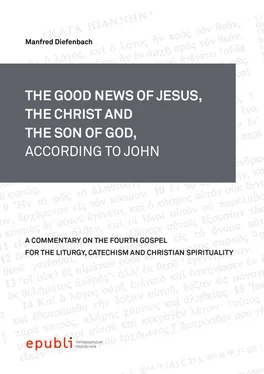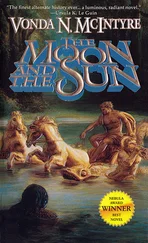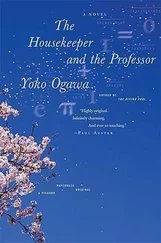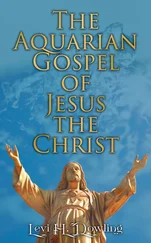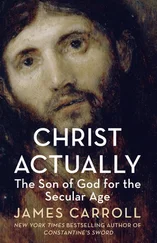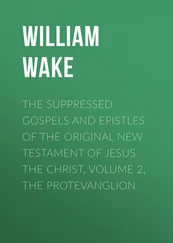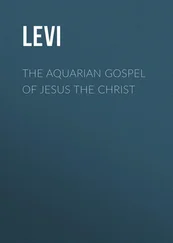Who:Jesus, the crowds (vv. 2a, 5, 22, 24), His disciples (vv. 3, 8, 12b, 16, 22, 24, 60, 61, 66), Philip (vv. 5, 7), Andrew (v. 8), the boy (v. 9)
Where:Sea of Galilee/Tiberias (v. 1a), mountainside (v. 3a)
When:“ near the Passover ” (v. 4)
v. 1:After the typical Johannine phrase “ after this ” 474the Evangelist names the place of the feeding of 5,000 with the help of an “itinerary” 475“ the far shore of the Sea of Galilee ” (cf. vv. 16–19, 22, 25) also called “ Sea of Tiberias ” (cf. v. 23 and John 21:1). The traditional site of the feeding of the loaves and fish is Tabgha. The name Tabgha is a distortion of the Greek word “ Heptapegon ”, that means “Seven Springs”. In the past, seven springs met at this point and flowed into the “Sea of Galilee”.
v. 2:Because of His healings (cf. 4:46; 5:3, 7) as “ miraculous sign ” (cf. v. 2b–c and 2:18, 23; 4:45 – note also the critical view in v. 26 and in 4:48; 12:37) – the Fourth Evangelist relates seven “ signs ” (cf. 2:1–11; 4:43–54; 5:1–18; 6:1–15, 16–21; 9:1–7/41; 11:1–44) in the so-called “Book of signs ”(cf. 1:19–12:50) – the “ crowd ” “ followed ” 476Him. He, the “Good Shepherd” (cf. 10:4–5, 27), was their “ light … in darkness ” (8:12).
v. 3:On the one hand Jesus and His disciples, who “ went up ” the hillside (in Greek “ óros ” in vv. 3a, 15d and in Mark 6:46; Matthew 5:1; 14:23; Luke 6:12), are at the centre of this scene. The disciples “ sat down ” around Jesus as their rabbi and Master.
v. 4: On the other hand take note of the time: “ the Passover ” (in Greek “ Páscha ” in John 2:13, 23 [in Jerusalem]; 11:55 [in Jerusalem]; 12:1; 13:1; 18:28, 39; 19:14 – note in the ritual context of the bread the Law according to Leviticus 23:11–15 477), “ the Jewish Feast ” (cf. John 2:13; 5:1; 7:2, 10), “ was … near ” (cf. 2:13; 7:2; 11:55).
- The Crisis/Problem because of the Hungry People (vv. 5–9 478 )
+ The Dialogue between Jesus and Philip (vv. 5–7)
v. 5:Because of His “ seeing ” (in Greek “ theáoma ɩ ”) the “ large crowd ”, Jesus asked: “ Where shall we ” (cf. Numbers 11:13 [LXX] “ buy bread 479 that ( these ) / may / eat ( )?” He asked Philip because they were about twelve kilometres respectively nine miles away (cf. John 1:44) from Bethsaida a town where one could buy (cf. 4:8) a great amount of bread.
v. 6:According to a remark by the Evangelist, Jesus, the donor/giver of wine (cf. 2:8–9) and the giver of the living water (cf. 4:11 480), wanted to “ test ” (in Greek “ pe ɩ rázo ” in v. 6b and in 8:6) especially “ Philip ” 481(in Greek “ Phíl ɩ ppos ”) to see his reaction and his idea/crisis management. This introduces a dialogue between Him and Philip (cf. vv. 5–7) and afterwards with Andrew (cf. vv. 8–9) in terms of crisis management.
v. 7:The problem/crisis is analysed: Bread is scarce. Usually the problem is solved by “ buying bread for this crowd ” (v. 5e–f) of people so that they would have enough pieces of bread to be satisfied. Philip started assessing the probable cost and calculated more than “ 200 denarii ” 482(cf. John 12:5 and Matthew 20:1–16) – that was eight months’ salary. The financial result was/is: It was more a logistic and less a financial challenge to do it 483.
+ The Dialogue between Andrew and Jesus (vv. 8–9)
v. 8:The Galilean fisherman “ Andrew ” 484from Capernaum (cf. Mark 1:29) or from Bethsaida (cf. John 1:44), “ the brother of Simon Peter ” (cf. 1:40), was pragmatic and suggested an alternative.
v. 9:A “ boy ” (respectively a “ slave ” – in Greek “ pa ɩdárɩon ” 485) brought what all that he had: “ five ” (small) barley “ loaves ” (vv. 9b, 11a, 13b) and “ two ” small (dried 486) “ fish ” 487(cf. vv. 9b, 11d and 21:9–10, 13). The comment is like Philip’s statement in verse 5e–f: “a drop in the ocean” in the sense of a losing venture/undertaking – that is not enough for these people. He will take what little they have and turn it into a great, wonderful feeding of “ 5,000 ” (v. 10d 2and Mark 6:44; Matthew 14:21) men.
- Jesus’ Crisis Management (vv. 10–11)
+ Jesus’ Order (v. 10)
Five loaves for “ 5,000 ” men (1 : 1000 = 1‰), not counting the women and children 488– in other words: A small quantity of food for a large crowd 489. In the meantime He directed the crowds to “ sit/lay down ” 490(cf. John 13:12, 25; 21:20) on the “ grass ” 491(cf. Psalm 23:2). The Evangelists Matthew and “John” omitted the instruction to form groups of 50 or 100 people set out in Mark 6:40, referring to Exodus 18:21, 25.
+ Jesus’ Blessing of the Loaves and Fish (v. 11)
Analogue to Luke 22:19, like a Jewish housefather during the ritual of the daily Jewish meal, Jesus “ took ” the (five) loaves, “ gave thanks ” (in Greek “ euchar ɩ stéo ” 492in vv. 11b, 23c) in the sense of a blessing 493, “ distributed ” 494the “ bread ” (vv. 5e, 7b, 9b, 11a, 13b) and fish (vv. 9b, 11d and John 21:9, 10, 13) to the hungry people. The Fourth Evangelist remarks that they could eat as “ much as they wanted ”.
The word was Jesus’ blessing – for God’s help – note the divine, sacramental, Eucharistic aspect;
the deed – with the help of His disciples – was to feed the hungry people – note also the social-ethical 495viewpoint. Everything came to the crowds from Jesus through His disciples as His co-workers. On behalf of Jesus, the disciples (“missio”) had to share out the blessed bread to the “community” (“communio”) of people as the “Holy communion”, then and now. The historical, social, and (ecclesiological) theological background (the “Sitz im Leben”) of the feeding stories is the Eucharist of the Early Church because in the first centuries of the Church, the Eucharist was always both “Holy communion” and food. In the Early Church there was always a meal as well (cf. 1 Corinthians 11:17–34).
- The Verification of the End of the Crisis (vv. 12–13)
v. 12:Five loaves to feed no less than 5,000 men plus the women and children. In our eyes, it is impossible, but for God and Jesus, it is not impossible. The outcome of the sharing of both loaves and fish is clear and brief. After the dinner, the crowd who had been hungry was “ satisfied ” 496, and there was plenty left over. Therefore Jesus gave the order – note the imperative! – to His disciples to “ gather up 497” (vv. 12c, 13a) “ the leftover 498” (vv. 12c, 13c and Matthew 14:20; Luke 9:17) “ pieces/fragments 499” (vv. 12c, 13b and Mark 6:43; Matthew 14:20; Luke 9:17), “ that nothing / may be / waste/lost ”.
v. 13:So they implemented Jesus’ instruction. The result was: “ twelve baskets 500” of “leftovers” (cf. Matthew 14:20; Luke 9:17). These “ twelve baskets ” represent the “ twelve ” tribes 501under the “ twelve ” disciples, and the crowd represents all of Israel gathered by Jesus.
Читать дальше
